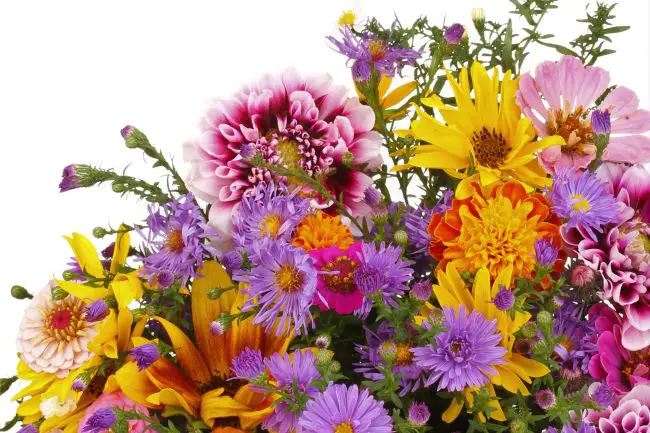
If you find yourself coveting the gorgeous arrangement of summer flowers on your neighbor’s deck, there is good news: you can create your own bouquets all summer long by starting a cutting flower garden. Flowers for cutting tend to be annuals, rather than perennials. There’s a reason for that.
The perennials that carpet those beautiful English cottage gardens, once cut, they are gone. Perennials usually bloom once—spring, summer, or fall. Most plants destined for a cutting garden are annuals, meaning they must be planted each year.
Why plant a cutting garden?
A cutting garden offers the best of both worlds. Because it is meant to be plundered — the more you pick, the more it produces. A cutting garden means an endless supply of flowers. While your garden displays beds full of peonies and roses and lilies that bloom undisturbed, you can pick your cutting garden to your heart’s content. In fact, they love to be cut. And they are easy to grow.
Aside from saving you money on arrangements from the florist, many cutting flowers are low maintenance and drought tolerant. And beneficial to the environment. Some draw bees, butterflies, and birds, while others, like marigolds, deter pests.
Tips for a growing a successful cutting garden
Georgine Hariban, Master Gardener and co-owner of Garden Gals Design in Montclair, New Jersey, encourages anyone with a few feet of soil to plant a cutting garden. She shares her tips for a foolproof cutting garden.
-
Follow the directions on the seed packet
Most of what you need to know will be there—when to plant, how to plant, sun and watering needs.
-
Sow seeds directly on the ground
Harabin says the number one problem gardeners have is planting seeds at the wrong time. Many guides advise starting the seeds inside in late winter and transplanting the seedings outdoors later. The problem with this is, she says, “starting seeds indoors poses more problems than successes for beginner gardeners. There is never enough sunlight, or the gro-light isn’t positioned properly, or it’s too warm, or the humidity is wrong.”
Instead, sow the seeds outside as soon as is recommended for each type of plant, she advises.
-
Plant flowers you plan to cut in empty spaces
Plant them out of sight in a space where they won’t be missed when they are cut later. One good spot is in between shrubs and perennials and other empty spots in the yard.
-
Give them the right kind and amount of light
Some flowers thrive only in full sun. Others prefer to hang out in the shade. Still others like a mix of both. Check the instructions on the seed packet before committing to their spot in the garden.

-
Water them—judiciously
Flowers can be as particular about water as they are sunlight. A number like to keep their feet moist. Certain others like to dry out in between watering. The majority of annuals have shallow roots so need more watering than established plants. Err on the side of watering less, though. It is much easier to kill plants by overwatering than by underwatering.
-
Deadheading equals longevity
“Deadheading and cutting the flowers encourages more blooms,” Harabin advises, “and it will extend the flowering period.”
10 easy to grow flowers for your cutting garden
Harabin recommends a selection of 10 easy to grow, nearly foolproof flowers for a beginner or casual gardener. The plants on her list will grow in most growing zones and are widely available.
In Victorian England gifts of blooms, plants, and specific floral arrangements were used to send a coded message to express feelings which could not be spoken aloud. If you envision giving flowers from your garden to your loved ones (or those less loved), consider the symbolic and historic meanings as well as their powers from mythology, medieval legends, folklore, and flower poetry.
Floriography: An Illustrated Guide to the Victorian Language of Flowers can help you avoid sending a nosegay of “levity” to a neigbhor whose house was struck by lightning.
Zinnias
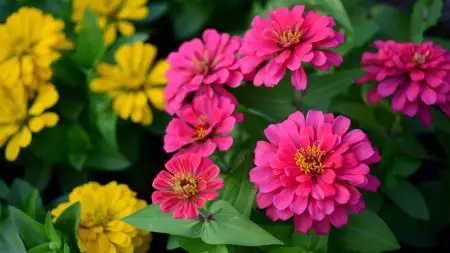
Zinnias are the clown car of garden plants. They burst with a rainbow of colors—red, orange, yellow, green, pink, and purple—on upright stems. The plants themselves also come in different heights. Choose those that grow to around three feet for a cutting garden.
There are three main kinds of zinnia flowers: single, semi-double, or double. The distinction between these forms comes from the number of rows of petals and whether or not the center of the flower is visible.
Zinnias are one of the easiest flowers to grow, as they grow quickly and bloom heavily. They belong in your garden.
Cosmos
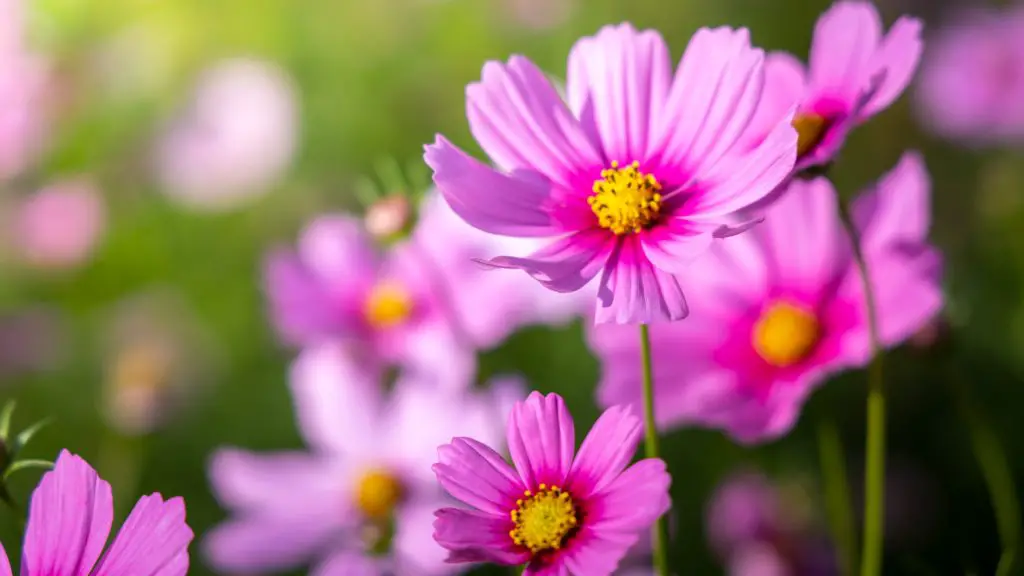
You may have seen rows of pink and lavender cosmos along a grassy highway divider, waving cheerily in the breeze.
These long-stemmed garden annuals can grow up to six feet tall, thriving in even poor soil. The blooms are up to three inches across, available in reds, whites, pinks, and purples. A magnet for butterflies and easily grown from seed sown directly in the garden. They look beautiful in a vase of summer flowers.
Cosmos flowers can tolerate warm, dry weather. They are even drought-tolerant. You will start to see blooms about seven weeks after seeding. They should continue to bloom until the next frost.
Larkspur

Larkspurs grow in tall spikes of 1’ to 3’, topped with light, airy blue-green foliage. Blooms range from beautiful shades of pink and purple, to sky and navy blue, and pure white. They add height to arrangements, reaching for the heavens as is their wont.
Larkspurs are related to delphiniums, but are annuals grown from seed each year. They are, however, easier to grow than delphiniums so better for the new or casual gardener. These cool-season annuals don’t much like the humid summers of the South. In more northern climates, plants can last longer into the summer if seeds are sown in early spring.
Choose well-drained soil. Larkspur doesn’t like to stay wet for long periods of time, but need consistent moisture, especially when flowering. If they remain too dry for too long, larkspurs can become stunted and you may miss out on blooms.
Dahlias

A nosegay of dahlias can take your breath away. Grow them for gorgeous, colorful flowers that have a growing season that’s at least 120 days long. They come in purple, red, orange, white, pink, yellow–all colors except the elusive blue. Depending on variety they can grow anywhere from 1 to 8 feet tall, but most varieties grow 4 to 5 feet.
An exception from our seed-flowers garden, dahlias are grown from small tubers planted in the spring. In northern regions treat them as annuals; they are only winter hardy in planting zones 8 to 11.
Plant dahlias when the ground temperature should reach 60°F. Dahlias grow best with 6 to 8 hours of direct sunlight.
Snapdragons
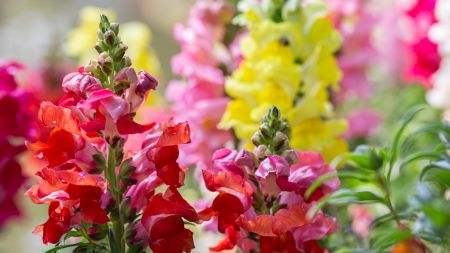
Snapdragons brings a bit of humor to your summer flower arrangement with their funny shape. The name originates from the flowers’ reaction to having their throats squeezed, which causes the “mouth” of the flower to snap open like a dragon’s mouth. Bees love them. Fingers beware.
This annual can grow from about 8 inches to 3 feet, depending on variety. Snapdragons feature small tubular blooms in a range of colors. Snapdragons are available in hundreds of cultivars and in just about every color except true blue and black. Pinch back young plants to encourage bushy growth. Begin deadheading after their first blooms.
Snapdragons are tough in the cold of early spring and late fall but will stop blooming in the heat. Give them plenty of sun but when it gets really hot provide them with some shade. They may not last all summer so enjoy them early.
Salvia
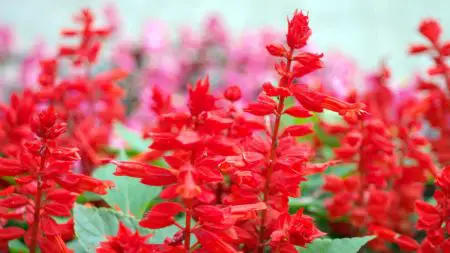
Salvia is nearly ubiquitous in flower gardens, treasured for tall colorful spikes of densely-packed blue, pink, purple, red, white, or yellow flowers atop square stems and velvety leaves. In fact, those leaves give off a distinctive, pungent odor that acts as a repellent to deer, rabbits, and other garden pests.
They grow 18 inches to 5 feet tall, depending on the variety.
There are varieties that will grow in sun or shade, when it is dry or where there is a lot of rainfall. All attract hummingbirds, especially the red ones, and are great picks for hot, dry sites where you want tons of color all season.
Most salvias do not like cool weather, so plant them outdoors after all danger of frost has passed.
Dwarf sunflower
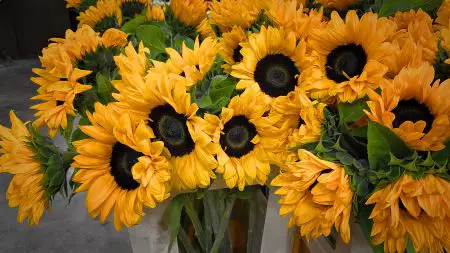
Sunflowers bear bright blooms from mid-summer to early fall, sunflowers say “summer” like no other plant. The flowers come in many colors–yellow, red, orange, maroon, brown–but are commonly bright yellow with brown centers that ripen into seeds.
But how can a sunflower, with their towering heights, fit into a summer bouquet?
Because there are tons of varieties of sunflowers from which to choose, including dwarf varieties and those that can have a lot of pollen for pollinators or pollen-free, best for bouquets.
Dwarf plants branch out to bear up to fourteen 4″ flowers each and are easy to grow from seed. Plant seeds every few weeks to have flowers all summer
2021 has been designated the “Year of the Sunflower,” so join the celebration and fill your garden with them.
Marigolds
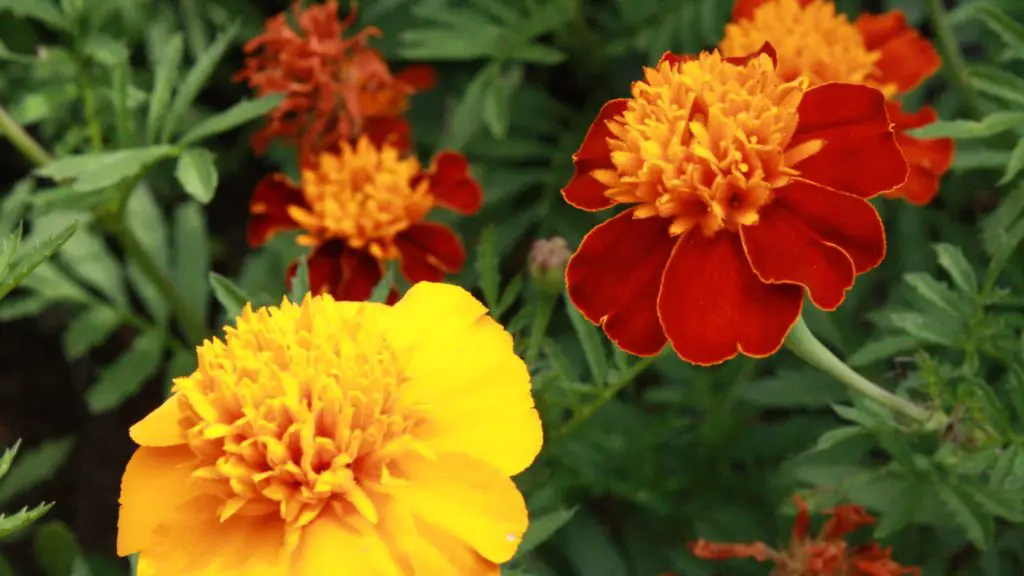
You may think of them as short border plants but marigolds can grow to a height of 30 inches. The tall varieties feature bright green foliage, sturdy stems, and 3-inch blooms.
The dense, continuously-blooming flowers are available in bright shades of yellows, oranges, and bronze and feature dark green foliage. Their blooming season is from midsummer to the first frost in the fall.
Consider planting marigolds in your vegetable garden, as they deter a number of pests.
Gomphrena
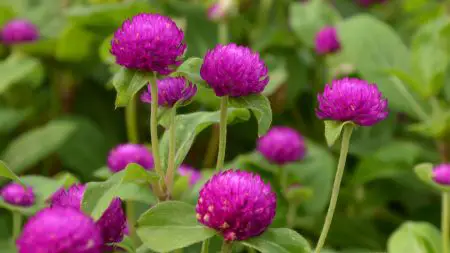
Gomphrena globosa, commonly known as globe amaranth, produces round-shaped flowers in shades of magenta, purple, red, orange, white, pink, and lilac on 24-inch stems. Gomphrena blooms continuously throughout summer and early fall. It is very heat tolerant and fairly drought resistant but grows best in full sun and regular moisture.
This plant is popular in cutting gardens for its vivid colors and color retention; the flowers attract butterflies, bees, and other pollinators. They make fanciful punctuations to summer flower arrangements.
You can direct-sow globe amaranth seeds in the garden after danger of frost is gone. Gomphena needs full sun for sturdy growth and good flower color. Plants can tolerate some drought once they are established.
Verbena
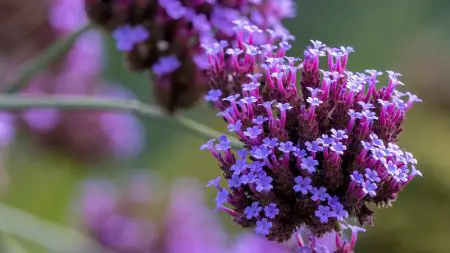
Verbena bonariensis This perennial (grown as an annual in colder climates) features quarter-inch purple flowers atop stiff, coarse stems. It can grow to about 6 feet and into clumps about 3 feet wide. Its light and airy appearance works well in cottage and contemporary gardens. It also attracts butterflies.
Seeds can be sown directly in the ground in spring. For best results grow verbena in full sun to partial shade, in moist but well-drained soil.
If you want to encourage branching, pinch the first shoots in the spring.
Planting guide at-a-glance
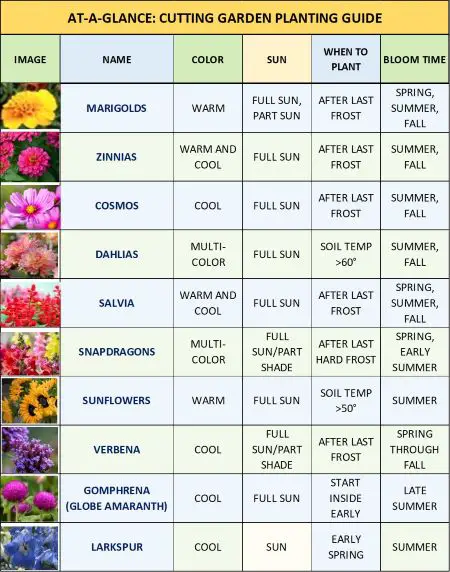
Useful resources
Sites that will help you learn more about the flowers listed above and how to plant and care for them:
- The Old Farmers Almanac Flower Growing Guide
- Better Homes and Gardens Plant Encyclopedia
- This Old House Gardening: How to and DIY
Seeds can be found at garden centers, hardware stores, even supermarkets. Then there are seed companies that you can find on the internet.
- Burpee Seed Company. The W. Atlee Burpee Company has been supplying seeds since the 1880s beginning with its well-known catalog that made it the world’s fastest growing mail-order seed company. The company was mailing a mllion catalogs a year by 1915. Today’s flower inventory can be found at burpee.com/flowers.
- Hudson Valley Seed Company was born from a concern about health and the environment. Today it is a premier source for heirloom and open-pollinated garden seeds and beautiful garden-themed contemporary art. Seeds for a wide arraay of flowers perfect for cutting can be found at hudsonvalleyseed.com/collections/flowers
- Johhny’s Selected Seeds began in spring 1973, when founder Rob Johnston, Jr, at age 22, started the fledgling seed company in a New Hampshire farmhouse attic. Over the past 48 years the company grewand now regularly ships seed to growers and home gardeners across the United States and to over 50 countries around the world. Johhny’s was one of the nine original signers of the Safe Seed Pledge. Flower seeds can be found at johnnyseeds.com/flowers.
* * *
You may also like these articles
- The hidden benefits of gardening for women over 60
- Forest bathing: It’s more than a walk in the woods.
- Hidden gardens, the perfect croissant, Edith Piaf: Books for exploring Paris by foot and all the senses
Go to the Blue Hare home page for even more inspiration for women over 60.
